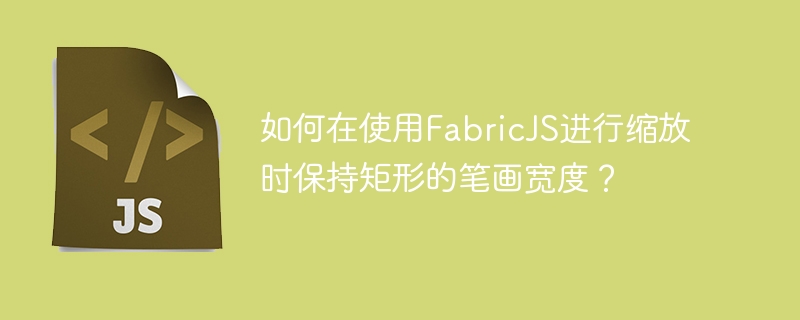

In this tutorial, we will learn how to maintain the stroke width of a rectangle when scaling using FabricJS. By default, the stroke width increases or decreases based on the object's scale value. However, we can disable this behavior by using thestrokeUniformproperty.
new fabric.Rect({ strokeUniform: Boolean }: Object)
Options (optional)− This parameter is an object that provides additional customizations for the rectangle. definition. Using this parameter, you can change the color, cursor, stroke width, and many other properties related to thestrokeUniformproperty.
strokeUniform< /strong>− This property accepts aBoolean value, allowing us to specify whether the stroke width scales with the object. Its default value is false.
Default appearance of stroke width when scaling objects< /p>
Let's look at a code example that describes the default appearance of the stroke width of a rectangular object being scaled. Since we are not using thestrokeUniformproperty, the stroke width will also be affected by the scaling of the object.
The Chinese translation of is: The Chinese translation of is: The Chinese translation of is:Default appearance of stroke width when scaling objects
Try scaling the object to see the default behavior
The Chinese translation of The Chinese translation of is:
Passing strokeUniform property as key
In this In the example, we pass the strokeUniform property as the key and true as the value Therefore, the object's strokes will no longer increase or decrease The scaling of the object will ensure that the stroke always matches the pixel size exactly The input content is: entered for stroke width.
The Chinese translation of is: The Chinese translation of is: The Chinese translation of is:Pass strokeUniform property as key
Try scaling the object to see that the stroke remains a uniform width
The Chinese translation of The Chinese translation of is: The translation of
The above is the detailed content of How to maintain the stroke width of a rectangle when scaling with FabricJS?. For more information, please follow other related articles on the PHP Chinese website!
 How to solve the problem that scanf return value is ignored
How to solve the problem that scanf return value is ignored How to define variables in golang
How to define variables in golang What are the java workflow engines?
What are the java workflow engines? What is the difference between hardware firewall and software firewall
What is the difference between hardware firewall and software firewall What is the function of frequency divider
What is the function of frequency divider How to set up ftp server
How to set up ftp server What are the microcontroller programming software?
What are the microcontroller programming software? what is hdmi
what is hdmi



